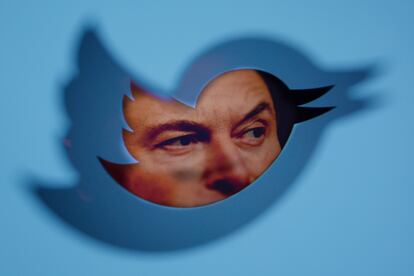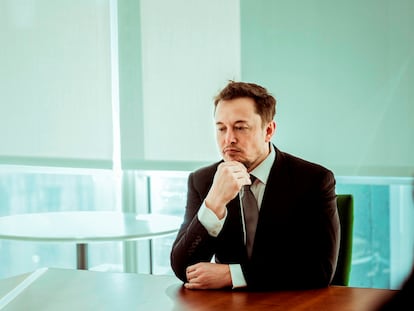How the understaffed Twitter is failing
Massive employee layoffs in several crucial areas are affecting the social media website, and it’s unclear whether the app could recover from a spike in activity or a systems crash

Since Elon Musk bought the company, Twitter’s workforce has been drastically reduced. The businessman announced massive layoffs, notifying affected employees by email. He subsequently sent another email to the remaining workers in which he asked them to make an absolute commitment to his project. Hundreds of employees decided to leave the company at that point. As a result, only 2,700 of Twitter’s 7,500 workers prior to the company’s acquisition by the richest man in the world remain there today.
The mass exodus has been noticeable on the app. Twitter still works: it loads normally, tweets can be sent without a problem and the service seems normal. But beyond that, there are already some bugs. Below, we discuss some of the major ones.
Lack of communication
The first of these issues emerged quickly. Elon Musk included his entire communications team, both national and international, in his layoff plan. Previously, the company had dozens of professionals around the world to address the media and different institutions; since the Tesla founder’s arrival, silence has been the norm. Journalists who want to find out the company’s version of what is going on have no place to turn. Now, the closest thing to official company press releases are Musk’s own tweets, which are sometimes contradictory.
Failing to remove racist content
Lately, social media sites are devoting more resources to content moderation. Twitter is a social network that has over 250 million users, it has universal reach and the website’s content is visible to the entire community. For that reason, it is quite striking that racist comments, especially those about public figures (which are more visible), remain on the platform. For instance, according to a study published in The Guardian, Twitter has been unable to remove 99% of the racist tweets posted in the week prior to the start of the World Cup in Qatar, an event with global repercussions. These bigoted tweets included monkey and banana emojis and calls for deportation.
The content moderation team was one of the most affected by Musk’s layoffs. The businessman has hinted that he intends to automate content control. He has also altered Twitter’s policy to reflect his confusing motto, “freedom of speech, but not freedom of reach.” That change prompted Musk to allow former president Donald Trump’s return to Twitter after he’d been expelled from it for “inciting violence” after the assault on the US Capitol in 2021. Previously, Musk had claimed that he would not make that decision until an advisory council addressing such tasks was set up, but he decided to let Trump back on Twitter without forming such a group.
What’s more, Musk has promised “general amnesty” to suspended accounts, paving the return for users who had previously been kicked off for spreading disinformation or making racist, homophobic and sexist comments. The billionaire made the decision based on the results of a Twitter poll, which asked: “Should Twitter offer a general amnesty to suspended accounts, provided that they have not broken the law or engaged in egregious spam?” Of the more than 3.1 million votes, 72.4% voted in favor and 27.6% against. “The people have spoken. Amnesty begins next week,” Musk tweeted.
Copyright infringement
Twitter’s lax control of the content posted on the website has not gone unnoticed. It has fallen off to such an extent that some people are already uploading entire movies, divided into two-minute clips (the maximum time allowed for videos), and sharing them in 50-tweet threads. Forbes recently reported that some accounts that post movies on Twitter have been suspended, while others remain active. What is the criterion for disabling such accounts? Twitter staff see posts that go viral and eliminate them.
The system for detecting copyright infringement seems to be down. The only option left is to remove problematic tweets by hand, which won’t be easy because of the greatly reduced number of staff. If entire movies continue to be uploaded and major production companies decide to act, Twitter may face a wave of lawsuits.
Lack of protection in authoritarian countries
The world’s most widely used social networks have very sensitive data that could harm users if that information fell into the wrong hands. Twitter has responded aggressively to requests for information (such as geolocation) and been proactive in removing government-produced content in countries with authoritarian regimes. According to The Washington Post, in July the company sued the Indian government. It considered the request to close accounts that are critical of the government to be “arbitrary” and “disproportionate.” Twitter has similar lawsuits pending in Japan, Russia, Turkey and South Korea.
“[Twitter] had an entire team handling information requests... a lot of that team has left, and they had held deeply that they were the last backstop over government overreach,” a source familiar with the department told Axios.
Unwarranted account suspensions
Twitter has had difficulties in suspending problematic accounts, but it is also making the mistake of disabling others that have not violated the rules. That was what happened to Massimo, a popular scientist, who then posted about his account’s needless suspension. Elon Musk himself replied to Massimo’s tweet, noting that the account had been suspended in error and that the matter had already been corrected.
There was an error last week where the system incorrectly suspended & deboosted your account. I’m told that those are now cleared.
— Elon Musk (@elonmusk) November 23, 2022
Fears of a spike in activity and system crashes
Musk himself constantly says it on Twitter: The World Cup boosts participation on social media. People tweet more and react more to its content. Twitter activity is expected to increase as the tournament progresses.
All social media websites want increased traffic. But that can come at a cost. Spikes in activity can overwhelm systems, leading them to crash when too many thousands of users are on the social network at the same time. The question is what will happen at Twitter if that comes to pass. Now, there are far fewer engineers to reset the system than there were in the past. A former Twitter employee with knowledge of how the platform deals with large-scale events told The Guardian that Twitter has a 50% chance of crashing during the World Cup.
Sign up for our weekly newsletter to get more English-language news coverage from EL PAÍS USA Edition.
Tu suscripción se está usando en otro dispositivo
¿Quieres añadir otro usuario a tu suscripción?
Si continúas leyendo en este dispositivo, no se podrá leer en el otro.
FlechaTu suscripción se está usando en otro dispositivo y solo puedes acceder a EL PAÍS desde un dispositivo a la vez.
Si quieres compartir tu cuenta, cambia tu suscripción a la modalidad Premium, así podrás añadir otro usuario. Cada uno accederá con su propia cuenta de email, lo que os permitirá personalizar vuestra experiencia en EL PAÍS.
¿Tienes una suscripción de empresa? Accede aquí para contratar más cuentas.
En el caso de no saber quién está usando tu cuenta, te recomendamos cambiar tu contraseña aquí.
Si decides continuar compartiendo tu cuenta, este mensaje se mostrará en tu dispositivo y en el de la otra persona que está usando tu cuenta de forma indefinida, afectando a tu experiencia de lectura. Puedes consultar aquí los términos y condiciones de la suscripción digital.











































